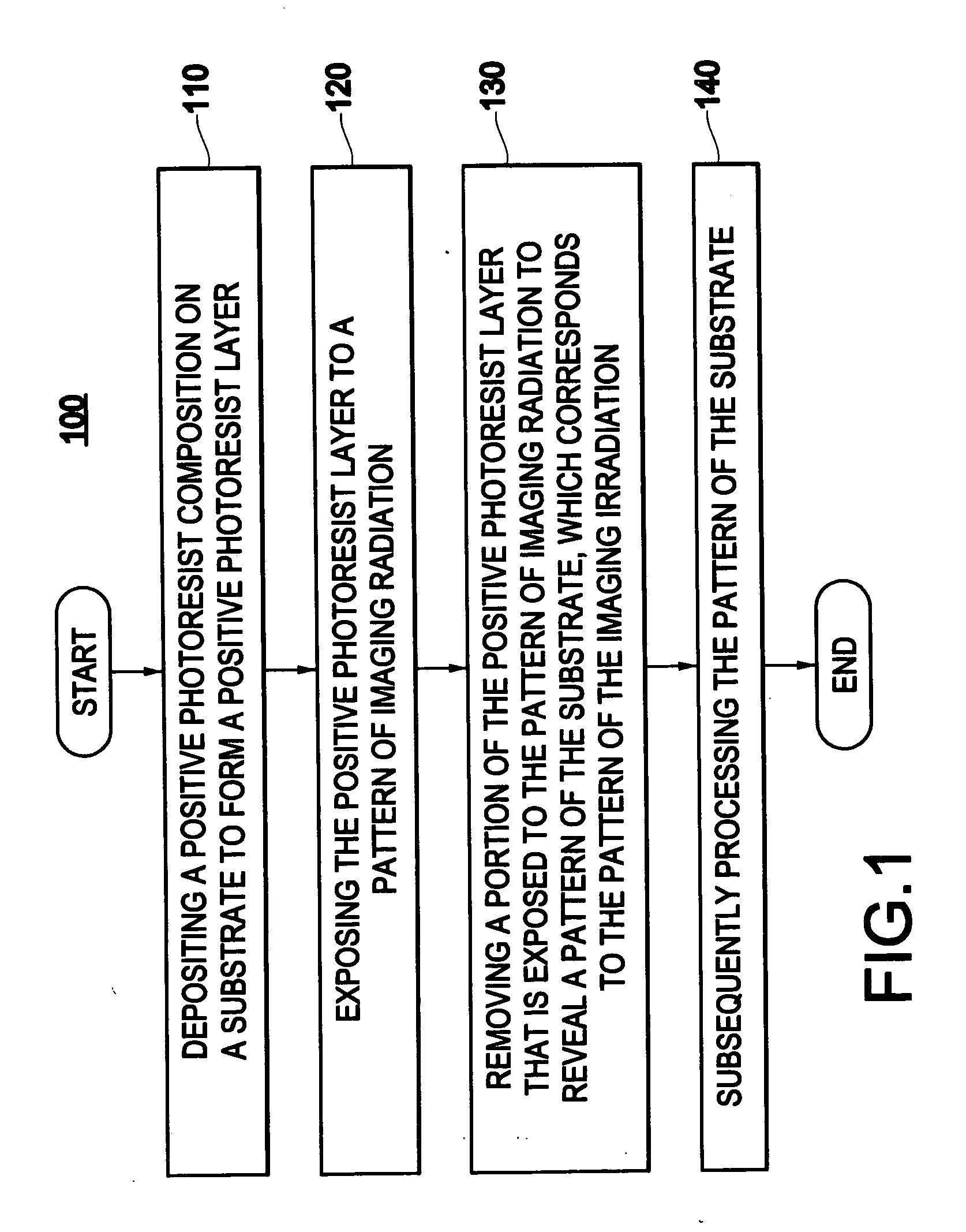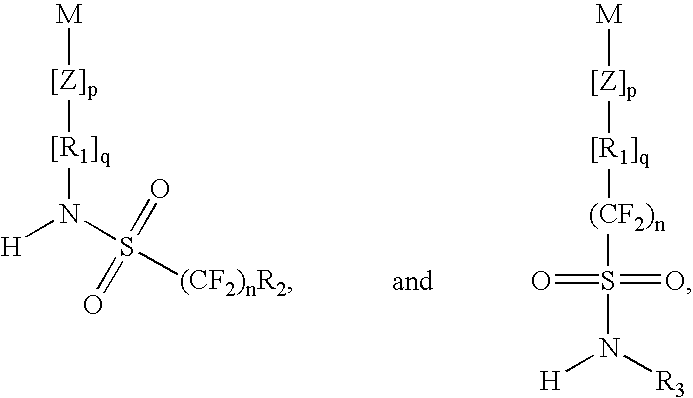Positive photoresist composition with a polymer including a fluorosulfonamide group and process for its use
a fluorosulfonamide group and composition technology, applied in the field of photoresist composition, can solve the problems of polymer cooh tending to swell and/or quickly dissolve, difficult to achieve slight dissolution in the developer,
- Summary
- Abstract
- Description
- Claims
- Application Information
AI Technical Summary
Benefits of technology
Problems solved by technology
Method used
Image
Examples
example 1
Synthesis of Poly(1-co-VIII-co-XVI)
[0060] 0.2 g (0.0012 mol) of 2,2′-azobisisobutyronitrile (AlBN) was added to a solution of 1.57 g (0.006 mol) of 2-trifluoromethanesulfonylaminoethyl methacrylate (I), 4.21 g (0.018 mol) of 2-methyl-2-adamantyl methacrylate (VIII), 3.55 g (0.016 mol) of 5-methacryloyloxy-2,6-norbornanecarbolactone (XVI) and 0.081 g (0.0004 mol) dodecanethiol in 28 g of 2-butanone. The solution was deoxygenated by bubbling dry N2 gas through the solution for 0.5 hr and then the solution was allowed to reflux for 12 hr. The reaction mixture of the solution was cooled to room temperature and precipitated in 400 mL of hexanes with rigorous stirring. The resulting white solid was collected by filtration, washed with several portions of hexanes, and dried under vacuum at 60° C. for 20 hr.
example 2
Lithographic Evaluation
[0061] For the purpose of evaluative lithographic experiments, a photoresist formulation containing Poly(1-co-VIII-co-XVI) (Example 1) was prepared by combining the materials set forth below, expressed in part by weight.
Propylene glycol monomethyl ether acetate90Poly(I-co-VIII-co-XVI)9.504-(1-Butoxynaphthyl)tetrahydrothiophenium0.475perfluorooctanesulfonate2-Phenylbenzimidazole0.025
[0062] The prepared photoresist formulation was spin-coated for 30 seconds onto an antireflective material (AR40, Shipley Company) layer applied on silicon wafers. The photoresist layer was soft-baked at 130° C. for 60 seconds on a vacuum hot plate to produce a film thickness of about 0.24 μm. The wafers were then exposed to 193 nm radiation (ASML scanner, 0.75 NA). The exposure pattern was an array of lines and spaces of varying dimensions down to 0.09 μm. The exposed wafers were post-exposure baked on a vacuum hot plate at 130° C. for 90 seconds. The wafers were then puddle dev...
PUM
| Property | Measurement | Unit |
|---|---|---|
| wt. % | aaaaa | aaaaa |
| wavelength | aaaaa | aaaaa |
| wavelengths | aaaaa | aaaaa |
Abstract
Description
Claims
Application Information
 Login to View More
Login to View More - R&D
- Intellectual Property
- Life Sciences
- Materials
- Tech Scout
- Unparalleled Data Quality
- Higher Quality Content
- 60% Fewer Hallucinations
Browse by: Latest US Patents, China's latest patents, Technical Efficacy Thesaurus, Application Domain, Technology Topic, Popular Technical Reports.
© 2025 PatSnap. All rights reserved.Legal|Privacy policy|Modern Slavery Act Transparency Statement|Sitemap|About US| Contact US: help@patsnap.com



